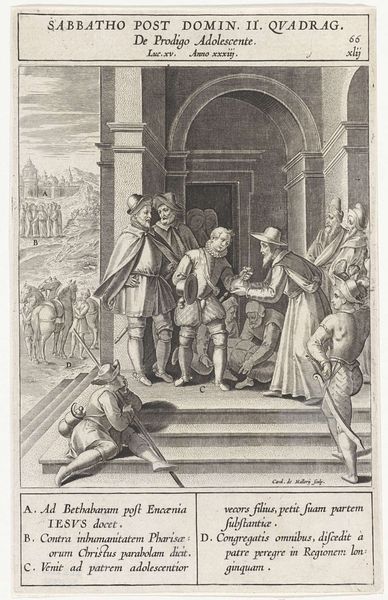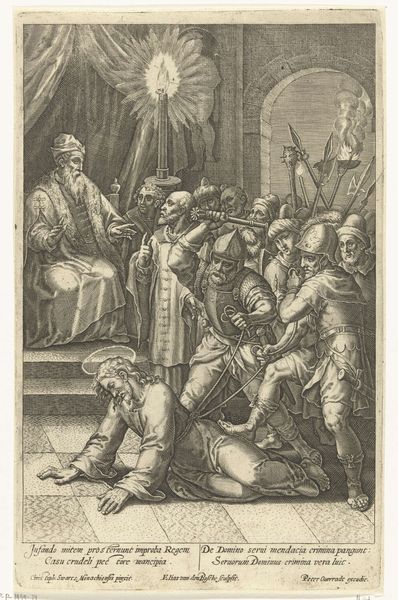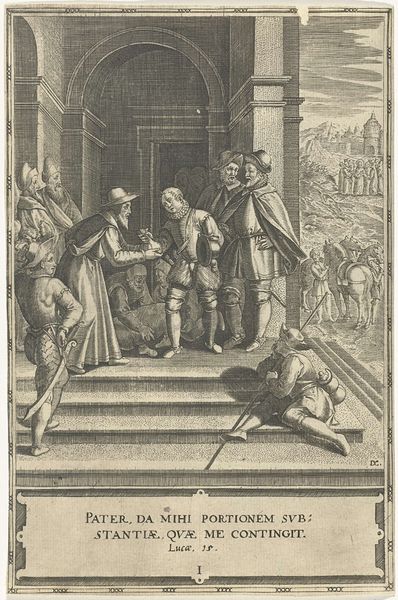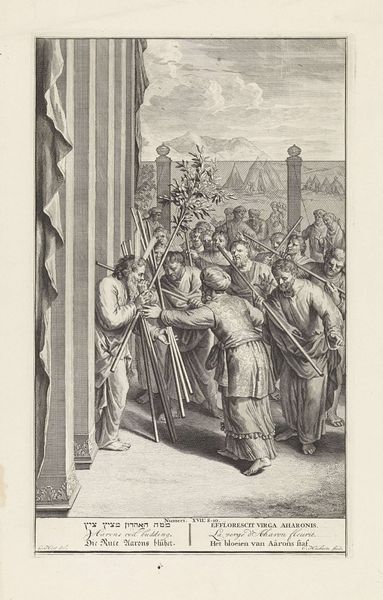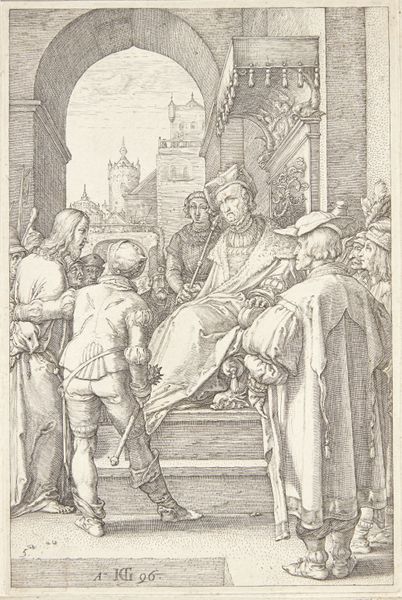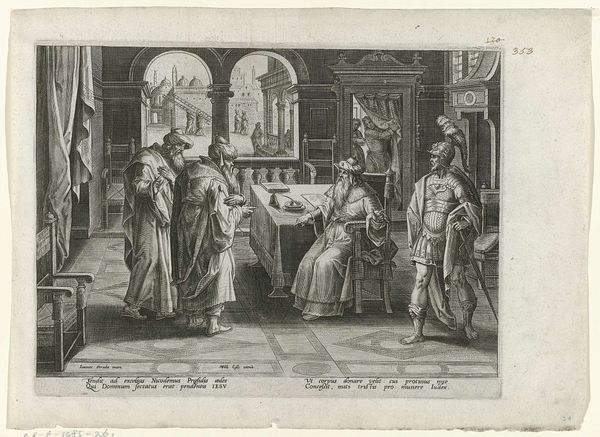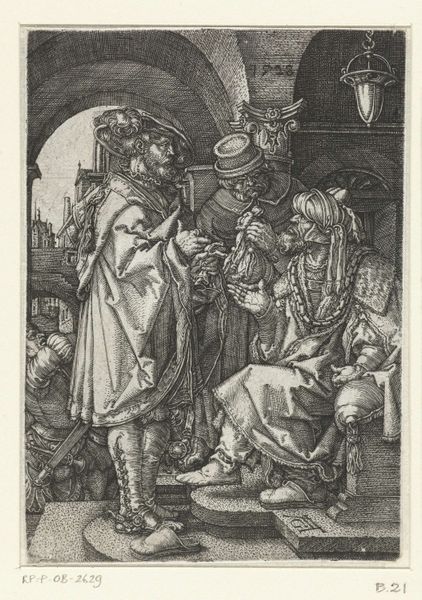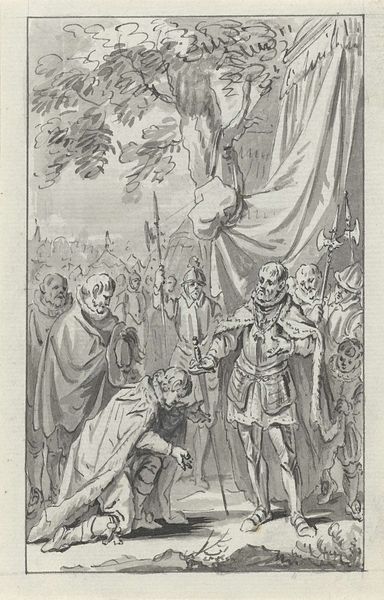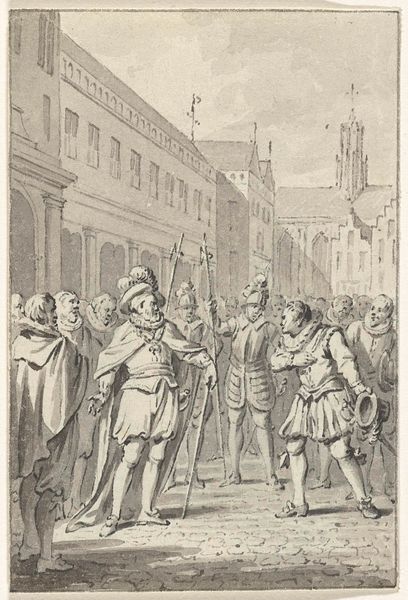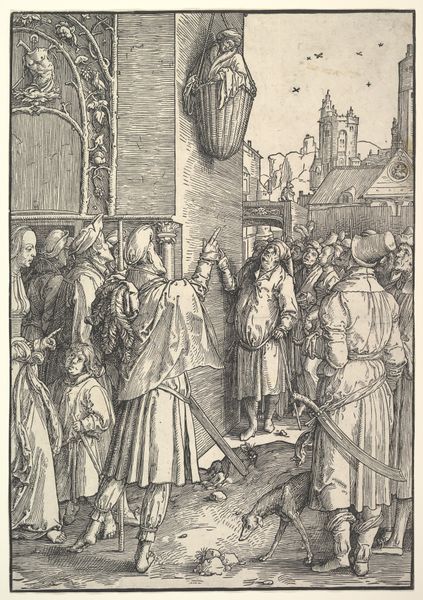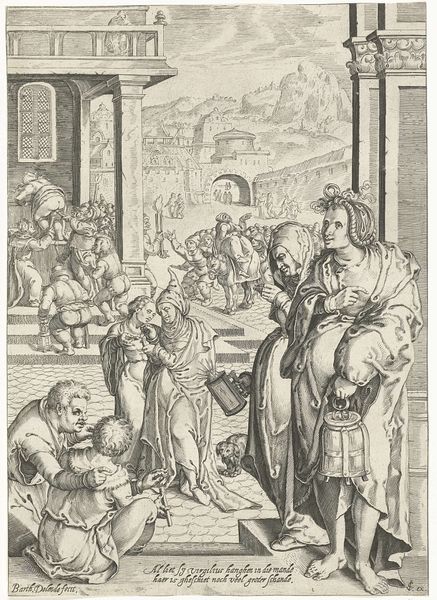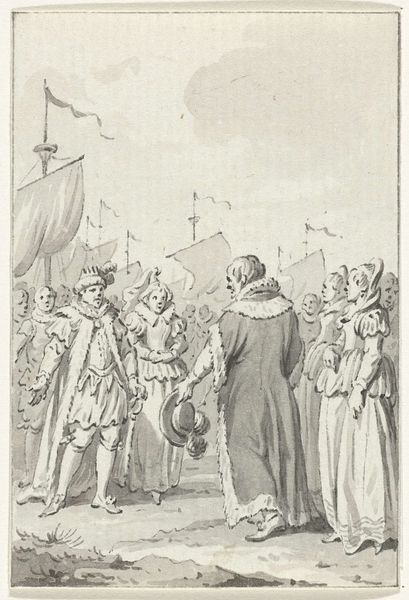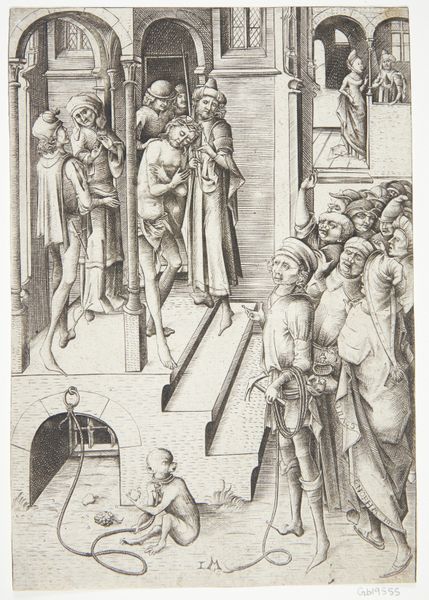
print, etching
#
baroque
# print
#
etching
#
figuration
#
history-painting
Dimensions: height 201 mm, width 141 mm
Copyright: Rijks Museum: Open Domain
Editor: This print, "Christ Before Caiaphas," was created by Nicolaes de Bruyn around 1618. The medium is etching, and the level of detail is impressive, considering the labor involved. What’s most striking to me is how De Bruyn uses light and shadow to emphasize Christ’s vulnerability amid what seems to be a scene of great injustice. How do you interpret this work? Curator: This print offers us a view into the material conditions of religious narratives in the 17th century. Think about the physical act of producing an etching, the labor involved in its creation. De Bruyn used materials accessible at the time and the circulation of this imagery through prints democratized these biblical scenes. Editor: That’s interesting! I hadn’t considered the print's role in making religious narratives more accessible. The "originality" of a piece would mean less than its circulation. Curator: Exactly. Furthermore, consider the social context. De Bruyn, by depicting this scene, participates in the wider societal discourse about power, authority, and the plight of the individual. How do you see this print engaging with debates of its time? Editor: Perhaps through the composition? All eyes are on Christ, which in turn implicates everyone who gazes upon this image as well. Also, I now notice this contrast between the humble garments of Christ and the rather extravagant garb worn by Caiaphas and his entourage. Curator: Precisely! De Bruyn is cleverly utilizing readily available means to address ideas around labor and accessibility. And now consider what its display, trade and circulation may have meant at the time. Editor: Thinking about it now, I wonder what other readily available techniques influenced this period’s understanding of this specific scene. Curator: Seeing the production and social context of an artwork like this gives us a much clearer insight into the conditions of its time. Thank you for offering some keen observations that help illuminate the piece.
Comments
No comments
Be the first to comment and join the conversation on the ultimate creative platform.
